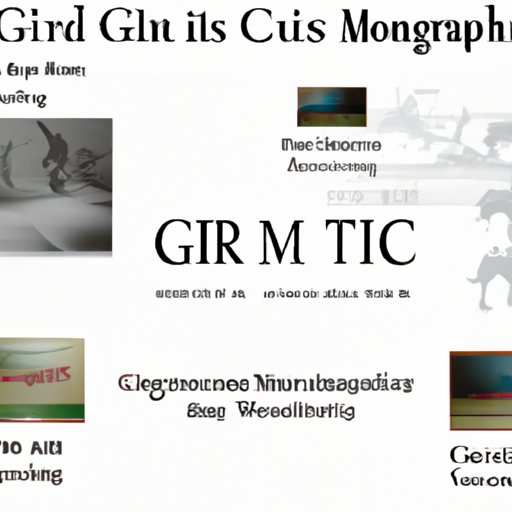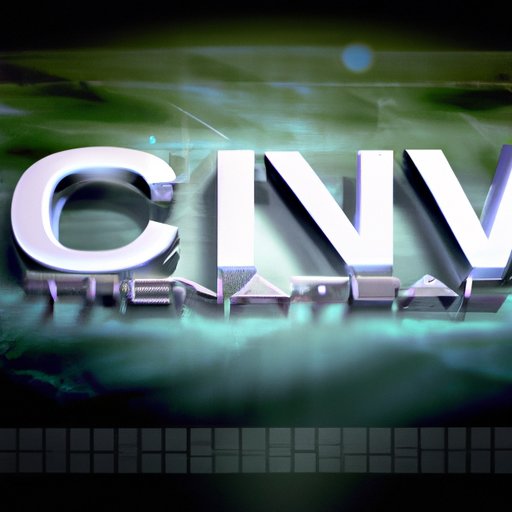Introduction
CGI technology is a form of computer-generated imagery (CGI) used to create realistic images, animations, and visual effects. In this article, we’ll explore the fundamentals of CGI technology, how it has revolutionized the film and TV industry, a comprehensive guide to setting up CGI projects, its benefits for animations, the history of CGI, its impact on visual effects, and the different types of CGI software available today.
Exploring the Basics of CGI Technology
Let’s start by exploring what CGI technology is and how it works. CGI stands for computer-generated imagery, and it is a type of 3D animation that uses computer graphics to create photo-realistic images. CGI is often used in movies, television shows, video games, and other forms of media to create stunning visuals that are difficult or impossible to achieve with traditional filming techniques.
CGI involves the use of specialized software programs to generate 3D models, textures, and lighting effects. These elements are then combined to create realistic scenes and characters. The process requires a great deal of skill and patience, as each element must be carefully crafted and adjusted to create the desired result. Additionally, the software must be constantly updated to keep up with the latest technological advancements.
CGI technology also has its advantages and disadvantages. On the plus side, CGI can be used to create stunning visuals that would otherwise be impossible to achieve. Additionally, CGI allows filmmakers and animators to experiment with different camera angles and lighting effects without the need for expensive equipment or lengthy production schedules. On the downside, CGI can be incredibly time-consuming and costly to produce, and the results can vary greatly depending on the skill of the artists involved.

How CGI Technology Has Revolutionized the Film and TV Industry
CGI technology has had a major impact on the film and television industries, allowing filmmakers to create more realistic and visually stunning films and television shows than ever before. One of the most notable examples of CGI being used in a movie is James Cameron’s Avatar, which utilized CGI to create a fully immersive, photorealistic world. Similarly, recent television shows such as Game of Thrones have used CGI to create sprawling landscapes and epic battle scenes that wouldn’t have been possible without the use of computer-generated imagery.
The benefits of using CGI for movies and television are numerous. It eliminates the need for expensive sets and props, and can be used to create realistic environments and characters that would otherwise be impossible to achieve. Additionally, CGI can be used to create complex visual effects and special effects sequences that would be much more costly and time-consuming to achieve using traditional methods. Finally, CGI is also much more cost-effective and efficient than traditional filming techniques, allowing filmmakers to save both time and money while creating high-quality visuals.

A Comprehensive Guide to Implementing CGI Technology in Your Projects
Now that you know the basics of CGI technology and how it has revolutionized the film and television industry, let’s take a look at how to actually implement CGI in your own projects. The first step is to determine what type of CGI software you will need for your project. Popular options include Autodesk Maya, 3ds Max, Blender, and Houdini.
Once you’ve selected the software, you’ll need to create a concept and storyboard for your project. This will provide a roadmap for the development of your project and ensure that all elements are included. After the concept and storyboard are complete, you’ll need to set up the scene, which involves positioning the camera, adding lighting and texture effects, and adjusting the various elements of the scene until it looks just right.
Finally, you’ll need to render the scene, which is the process of turning the 3D models and effects into a 2D image or animation. Rendering can take a considerable amount of time, so it’s important to plan ahead and be prepared for potential delays. Once the rendering is complete, you’ll have a finished product that is sure to impress.
When working with CGI, there are a few tips and tricks to keep in mind. First, it’s important to pay close attention to detail, as even small mistakes can ruin the entire effect. Additionally, it’s important to stay organized, as the sheer number of elements involved in CGI projects can quickly become overwhelming. Finally, it’s important to take regular breaks to avoid burnout and maintain your enthusiasm for the project.
The Benefits of Using CGI Technology for Animations
CGI technology can also be used to create stunning animations. Compared to traditional animation techniques, CGI offers several advantages. For one, CGI allows animators to create higher quality and more realistic animations than ever before. Additionally, CGI is much more efficient and cost effective, as animators don’t have to spend time drawing and redrawing frames. Finally, CGI also offers improved rendering times, allowing animators to quickly create beautiful animations.

A Look at the History of CGI Technology
CGI technology has come a long way since its humble beginnings in the early days of computer graphics. Early developments in the field occurred in the 1960s and 1970s, when computers were first used to create simple shapes and patterns. However, it wasn’t until the 1980s that CGI began to be used in movies, with the release of Tron in 1982. From there, CGI technology continued to evolve, with groundbreaking films such as Jurassic Park (1993) and The Matrix (1999) demonstrating the power of CGI.
In the 2000s, CGI technology became increasingly sophisticated, with films such as Avatar (2009) and Gravity (2013) pushing the boundaries of what was possible. Today, CGI technology is used in almost every major Hollywood film and television show, and its impact on the entertainment industry cannot be overstated.
Examining the Impact of CGI Technology on Visual Effects
CGI technology has had a significant impact on the visual effects industry. CGI can be used to create photorealistic environments and characters that would otherwise be impossible to achieve. Additionally, CGI can be used to enhance existing visuals, such as explosions and fire effects, making them look more realistic and dynamic. Finally, CGI can also be used to create complex visual effects sequences that would be much more costly and time-consuming to achieve using traditional methods.
CGI is also becoming increasingly popular in the world of advertising, with many companies utilizing CGI to create stunning visuals for their campaigns. According to a study by the American Association of Advertising Agencies, “CGI-based advertisements are twice as likely to be remembered and three times as likely to evoke strong emotions in viewers.”

Understanding the Different Types of CGI Software Available Today
There are a variety of different types of CGI software available today, and each program has its own unique features and capabilities. Popular options include Autodesk Maya, 3ds Max, Blender, and Houdini. Each program has its own pros and cons, so it’s important to research each one to find the best option for your project.
Autodesk Maya is one of the most popular options, as it offers a wide range of features and tools for creating stunning visuals. 3ds Max is another popular option, offering advanced tools for creating photorealistic environments and characters. Blender is a powerful open-source software that is free to download and use, while Houdini is a professional-grade program designed for creating complex visual effects.
Conclusion
In conclusion, CGI technology has revolutionized the film and television industry, allowing filmmakers to create stunning visuals that would otherwise be impossible to achieve. Additionally, CGI can be used to create photorealistic animations and complex visual effects sequences, making it a powerful tool for any filmmaker or animator. Finally, there are a variety of different types of CGI software available, so it’s important to do your research to find the best option for your project.
Overall, CGI technology is a powerful tool that can be used to create stunning visuals and animations. With the right skills and knowledge, anyone can create amazing visuals with CGI technology. So if you’re looking to take your projects to the next level, CGI is definitely worth considering.
(Note: Is this article not meeting your expectations? Do you have knowledge or insights to share? Unlock new opportunities and expand your reach by joining our authors team. Click Registration to join us and share your expertise with our readers.)
